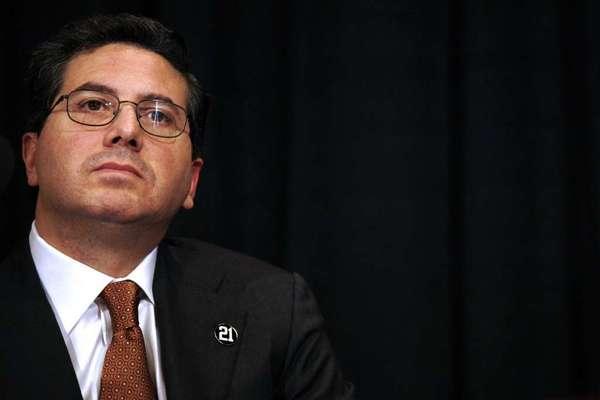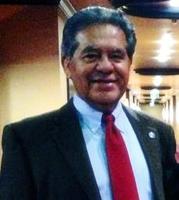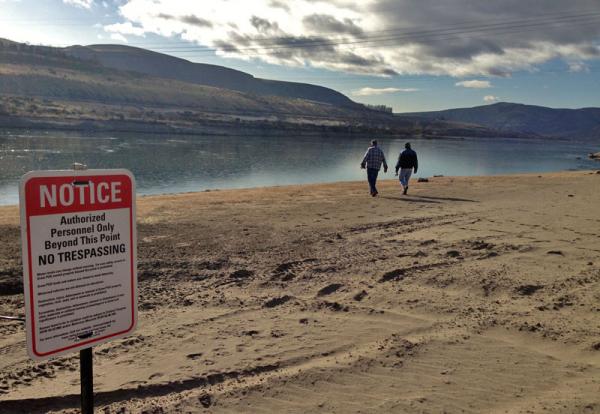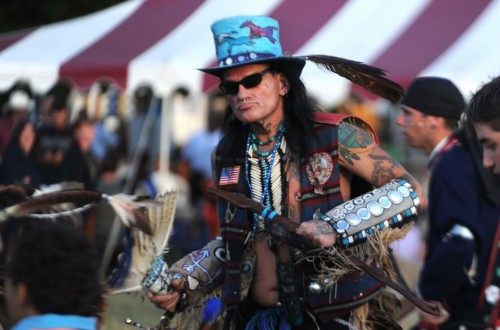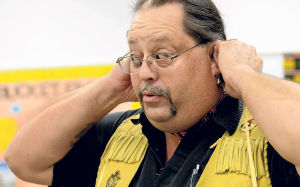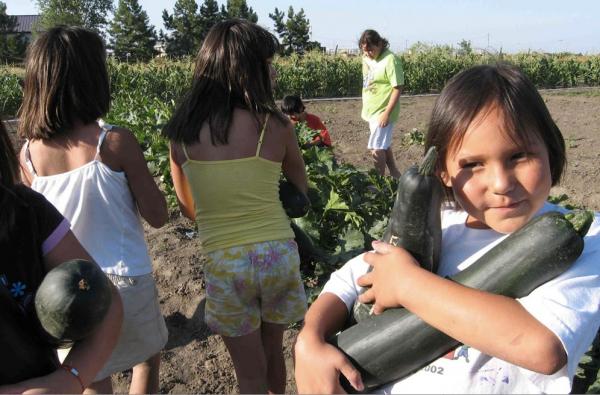Dan Snyder, the owner of Washington’s NFL team, made brief remarks to an Associated Press reporter on Tuesday arguing that it’s time for people to “focus on reality” concerning Native American issues instead of criticizing the team’s nickname.
“We understand the issues out there, and we’re not an issue,” Snyder said. “The real issues are real-life issues, real-life needs, and I think it’s time that people focus on reality.”
Snyder’s remarks came after his football team donated copy00,000 to a high school athletic field in a Virginia suburb of D.C. The donation was based on a letter he wrote last month to announce his Washington Redskins Original Americans Foundation. “I wrote a letter to the fans and it speaks for itself,” Snyder told reporters. “It tells you we did our homework, unlike a lot of people, and we understand the issues out there.”
RELATED Snyder Wins: How ‘CancelColbert’ Drowned Out the Native Voice
But many say that Snyder needs a serious dose of reality himself. In a statement, the National Congress of American Indians said, “Dan Snyder lives in a world where he can get his way throwing his money around. The reality is that he is stubbornly defending the use of a slur.”
“Here’s a reality check: The longer [Snyder] insists on slurring Native Americans, the more damage he will keep doing to Native American communities,” Ray Halbritter, Oneida Indian Nation representative, said in a statement.
Snyder has insisted that he will never change the team’s’ name, calling it a “badge of honor,” and he did not respond to reporters’ questions that his new foundation is a way of throwing money around to silence his critics. Instead, he asserted that the foundation is on the right track. “I think it tells you that we did our homework — unlike a lot of people,” he said.
But the foundation is receiving a failing grade from many leaders in the Native community, including Notah Begay III a four-time winner on the PGA Tour. Begay, who spoke to USA TODAY Sports before Snyder made his comments, said that the foundation was “a gimmick” and that Snyder was trying to “offset some of the public disdain for the name of his football team. The Washington football team’s front office has tried to make the issue about them and it’s really not about them. It’s about, unfortunately, the NFL and its owners and its corporate partners condoning use of that word.
RELATED NIGA’s Stevens on Navajo President, ‘Slams,’ Respect and Redskins
“I don’t think if a similar racially offensive word was used for the Hispanic, African American or Jewish communities that it would be tolerated,” Begay told USA Today. “But because the American Indian people historically have not had much political leverage, or because we don’t represent a great amount of buying power from a retail standpoint, we don’t get the same level of treatment that everyone else in this country gets.”
Read more at http://indiancountrytodaymedianetwork.com/2014/04/23/snyder-tells-redskins-critics-we-are-not-issue-154566?page=0%2C1

